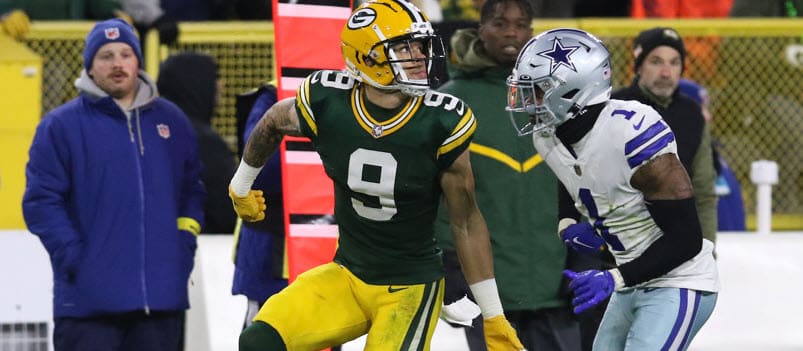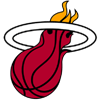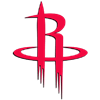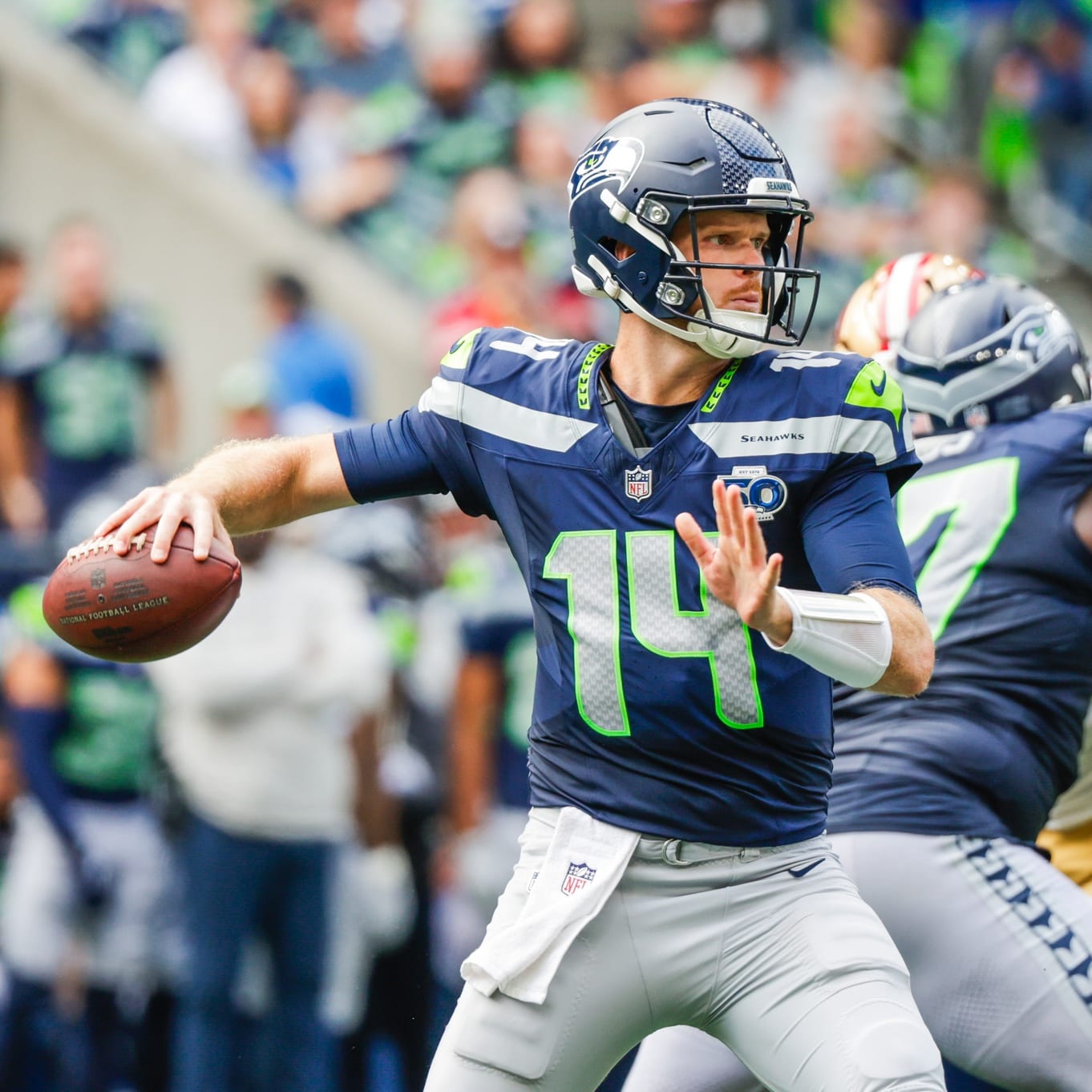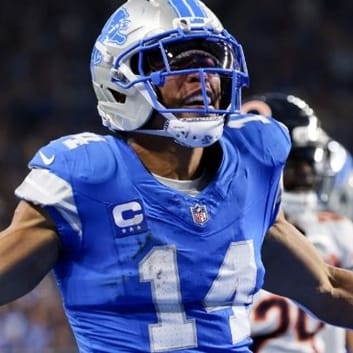The Wide Receiver series will be in multiple installments like the running backs. This first one (here) looked at Arizona, Baltimore and Buffalo, while this one will look at Cincinnati, Denver and Green Bay.
The competitions are listed alphabetically for team location, and the players are listed in order of years in the NFL. A general verdict is issued at the end of each blurb.
Charlie Jones vs. Andrei Iosivas vs. Jermaine Burton, CIN
Tyler Boyd is a good player but was somewhat miscast in Cincinnati – Boyd could never create major separation and Joe Burrow lacks the cannon arm to power through the brief openings that Boyd was capable of, so replacing Boyd with speedier or/and bigger targets capable of winning in traffic would be a way for the Bengals to upgrade their 2024 offense. Each of Jones, Iosivas and Burton offer an easily-understood way to improve on Boyd's previous reps, because each player has the speed to create more separation than Boyd did, and each one is more dangerous after the catch, too.
Jones (6-feet, 175 pounds) is the oldest and most experienced of the three, and he should stick around as Cincinnati's preferred punt returner after selecting him in the fourth round out of Iowa last year. The problem for Jones is that his collegiate production was sketchy – namely, he only broke out with a major age advantage, and as a result he'll turn 26 in October. Although Jones has real speed (4.43-second
The Wide Receiver series will be in multiple installments like the running backs. This first one (here) looked at Arizona, Baltimore and Buffalo, while this one will look at Cincinnati, Denver and Green Bay.
The competitions are listed alphabetically for team location, and the players are listed in order of years in the NFL. A general verdict is issued at the end of each blurb.
Charlie Jones vs. Andrei Iosivas vs. Jermaine Burton, CIN
Tyler Boyd is a good player but was somewhat miscast in Cincinnati – Boyd could never create major separation and Joe Burrow lacks the cannon arm to power through the brief openings that Boyd was capable of, so replacing Boyd with speedier or/and bigger targets capable of winning in traffic would be a way for the Bengals to upgrade their 2024 offense. Each of Jones, Iosivas and Burton offer an easily-understood way to improve on Boyd's previous reps, because each player has the speed to create more separation than Boyd did, and each one is more dangerous after the catch, too.
Jones (6-feet, 175 pounds) is the oldest and most experienced of the three, and he should stick around as Cincinnati's preferred punt returner after selecting him in the fourth round out of Iowa last year. The problem for Jones is that his collegiate production was sketchy – namely, he only broke out with a major age advantage, and as a result he'll turn 26 in October. Although Jones has real speed (4.43-second 40), his skill set grade at receiver is poor and he'll likely be a backup for the duration of his NFL career.
Iosivas (6-foot-3, 205 pounds) is about a year younger than Jones but offers even more in the way of athleticism, matching Jones' 4.43-second 40 but at three inches taller and 30 pounds heavier. Iosivas also logged strong jumps and agility testing at the combine. Despite being drafted two rounds later than Jones in the same draft, it appears that Iosivas has already safely jumped ahead of Jones on the depth chart.
Indeed, the battle for the WR3 role in Cincinnati seems almost entirely between Iosivas and Burton, the rookie third-round pick out of Alabama. Burton was widely considered more like a second-round pick, and he fell to the third round for character reasons after former coaches said Burton is difficult to work with. On the one hand, if Burton's talent is the only concern then he probably outranks Iosivas. On the other, if Burton is having the same coachability issues in Cincinnati as he did at Alabama and Georgia then his talent might not matter, especially since the Bengals seem fond of Iosivas otherwise.
So far in training camp the Bengals have been effusive in their praise of Iosivas, with Joe Burrow predicting that Iosivas would have a "big year" for the Bengals in 2024. Not just that, but wide receivers coach Troy Walters said that at the moment Iosivas is likely the WR3 behind Ja'Marr Chase and Tee Higgins.
One additional concern to keep in mind for all three of these wideouts is the presence of 'tight end' Mike Gesicki. As much as Gesicki is classified as a tight end, he's mostly just a slot receiver. It's particularly easy to imagine the Bengals rotating out Iosivas or/and Burton once the Bengals get into the red zone, where Gesicki's height and leaping ability are more likely to pay off. Also, while I didn't list Trenton Irwin as a candidate to 'replace' Boyd, Irwin will likely make the team and could play enough to mess up the projections for Iosivas or/and Burton.
Verdict: Rather than one player taking up most or all of Tyler Boyd's vacated reps, the Bengals will likely split their WR3 functions between at least two players and maybe more. Given the praise he's drawn in training camp, Iosivas might be the favorite to lead the way initially, but Iosiva's overall prospect profile is not compelling and unless he makes a fundamental transformation he will likely see Burton and even Gesicki rotate into the slot rep depending on the situation and the playcall. Additionally, the Bengals didn't spend a third-round pick on Burton – widely considered a second-round talent with character concerns – just so he could be a WR4/WR5 type. Bad picks happen, but if Burton doesn't play almost immediately then the Bengals might already regret the pick.
Josh Reynolds vs. Marvin Mims vs. Troy Franklin, DEN
Courtland Sutton is locked in as the WR1 in Denver, so these three are battling for the No. 2 and No. 3 wideout roles. The Broncos probably won't be among the more productive passing offenses in the NFL, but there should be some value provided if one of them can emerge as a clear WR2.
Reynolds arguably offers the highest floor as a proven veteran and free agency pickup, albeit a cheap one at two-years, $14 million. Now 29 and turning 30 in February, there's reason to be leery of potential imminent decline, but to this point Reynolds has been a solid 45-grade type NFL player – not quite a guy you want starting but one who usually doesn't hurt you too much when he does start. Reynolds can line up pretty much anywhere and operate credibly at any underneath or intermediate depth. Reynolds has shown the ability to produce efficiently in those capacities, though always on low target rates. It's likely that if Reynolds needed to be targeted more rapidly his efficiency would decline similarly quickly.
Neither of Sutton nor Reynolds can threaten downfield, but Mims certainly can. Whereas Reynolds ran a 4.52-second 40 in 2017, Mims entered the draft last year after logging a 4.38-second 40 at the combine and torching downfield repeatedly at Oklahoma. The problem for Mims is that he hasn't conclusively demonstrated an ability to threaten the intermediate. While Mims was dominantly productive at Oklahoma, leading the team in receiving yardage and touchdowns each year for three years in a row, his single-season career high in receptions was only 54 in 2022. Mims did extreme damage on his targets, but if Oklahoma had scaled up its intermediate passing game it's possible that Mims' numbers would have suffered somewhat. There's still room for a Tyler Lockett-like outcome to Mims' career – at just 22 years old Mims' developmental window is still very much open – but if Mims can't demonstrate an intermediate-viable skill set then he'll be liable to rotate with Reynolds depending on the play call and situation. Mims should at the very worst be a high-efficiency, high-explosiveness playmaker on a WR3 usage volume, but if he could start drawing more intermediate targets you'd have a Pro Bowl candidate.
Franklin is something of a wildcard as a rookie fourth-round pick, one who has no obvious route to the field over Mims or Reynolds. Franklin struggled with drops at Oregon and figures to continue struggling with physicality at a skinny 6-foot-2, 176 pounds, but Franklin is fast (4.41-second 40) and has a notable amount of innate talent at running away from people. Mims is a bit faster, though, and at a much denser build, so Franklin is unlikely to match Mims as a big-play threat. Meanwhile, Reynolds will likely outrank Franklin in terms of dependability in the underneath and intermediate.
Verdict: Reynolds and Mims will likely be the second and third-leading wideouts for Denver, in some order probably subject to situation. Franklin will likely play as Denver's WR4 or WR5, depending on the status of Tim Patrick. Mims is the one with the most fantasy upside, but if he doesn't develop further Mims might see himself limited to a high-low style of play, dependent on big-play ability due to lacking target volume.
Christian Watson vs. Romeo Doubs vs. Jayden Reed vs. Dontayvion Wicks, GB
The Packers' pass-catching personnel is the deepest and most interchangeable in the NFL. Any of these four players might be safe starters on most other teams, but on this one they're all stabbing at once at a pie that might not be big enough to support their respective ambitions and potential.
Watson has the highest draft pedigree of the group, selected in the second round out of North Dakota State in 2022, but injuries and skill set limitations have clarified his pro projection as a big-play oriented role player rather than that of a WR1 type. Even if Watson no longer deals with the hamstring and knee troubles that bothered him previously, Watson lacks the suddenness and short-area coordination to play comfortably at intermediate depths, where windows close the quickest and wrong steps invite brutal collisions. Watson's exceptional speed and reach make him highly dangerous in space, especially downfield, but when he has to cut through clutter he starts to fall off rhythm. In practice, this reduces Watson to a high-low target – one you either target in quick game or downfield on fly/post routes, but little or nothing in between. This is why nearly all of Watson's touches in college were either an end around, a screen, or a downfield bomb. If Watson's ADOT remains high (15.0 YPT in 2023) then it will be challenging to maintain his target rate from 2022-2023 (119 on 916 snaps).
Even if Watson is limited in his intermediate usage from scrimmage, he should prove explosive enough in his high-low application that he remains the second or third-most active Packers wideout in terms of snaps. Watson's application is more limited by field depth than alignment – he should line up in both the slot and on the boundary, just generally drawing either the very low or very high-ADOT routes from either alignment. Within this application Watson should prove a relatively high-YPT, high-touchdown rate receiver on a per-target basis.
One concern for Watson's fantasy upside is Reed specifically, because while Reed mostly focused on the slot in 2023 Reed was so utterly dominant there that the Packers are compelled to give him more snaps after logging only 552 in 16 games last year. Reed wasn't just some vague version of promising – Reed torched his rookie year like very few receivers do, producing 10 touchdowns from scrimmage (two rushing) while drawing 94 targets and yielding 1.65 yards per snap. It's a generally safe rule to say that any receiver who produces like Reed did last year is one of the best receivers in the NFL. Crowded wideout group or not the Packers must give more snaps and usage to Reed in 2024. Whether that comes in the form of more boundary snaps, more slot snaps or both is unclear, but generally to me it seems like if it must come down to Watson versus Reed then Watson loses, just as almost all receivers in the NFL would lose to Reed.
Doubs is in any case the clear top boundary wideout for the Packers, giving him the highest projected snap count since the Packers are more crowded in the slot than they are on the perimeter. Doubs is a prototypical perimeter target, posing a convincing vertical threat while fighting effectively along the whole length of the sideline. Whereas Watson was just a high-low player at North Dakota State, Doubs was a workhorse WR1 at Nevada who threatened at all levels and ultimately went down as one of the better wideouts in college football history. Doubs is also nearly a year younger than Watson, making it easier to project skills growth in Doubs' case than Watson's. Doubs would probably be hard-pressed to improve the per-snap target rate he's shown to this point (163 on 1,314 snaps), but it's worth noting that he was probably better in 2023 than his regular season numbers would appear at a glance – not only did Doubs draw six defensive pass interference calls, but he torched in the playoffs (10 catches for 234 yards and one touchdown on 12 targets).
Wicks is something of a wildcard, seemingly armed with a set of traits that make him a fit both on the boundary and in the slot. We might think of Doubs as the No. 1 boundary wideout with Watson No. 2 and Wicks No. 3, while in the slot we'd probably rank things 1. Reed, 2. Watson, 3. Wicks. It's difficult to anticipate how Wicks will see the field much with some variation of Doubs, Reed and Watson generally ahead of him, but Wicks' swing backup status also makes him a candidate to play more if any of the prior three were to miss time. Wicks' rookie season was a success as a fifth-round pick out of Virginia, which was good to see because his final season at Virginia was one of the mos brutal you'll ever see. Wicks dominated for Virginia in 2021, however, so his strong 2023 showing grants reassurance that the 2022 struggles were a fluke.
Verdict: It's unlikely that any one Packers receiver is anywhere near the league leaders in snaps at wide receiver, but Doubs is likely the best candidate to lead the Packers receivers in snaps with something like maybe 850. This is owed to being Green Bay's top boundary wideout, whereas the likes of Reed and Watson require more slot accommodation, where they both compete for reps not only against each other, but even Wicks and maybe even Luke Musgrave or Bo Melton. Reed will likely by far be the most productive on a per-snap basis, to the point that he should safely outproduce the rest in terms of fantasy points. Any of Doubs, Reed, Watson or Wicks project for greater upside potential if more opportunity should arise.


